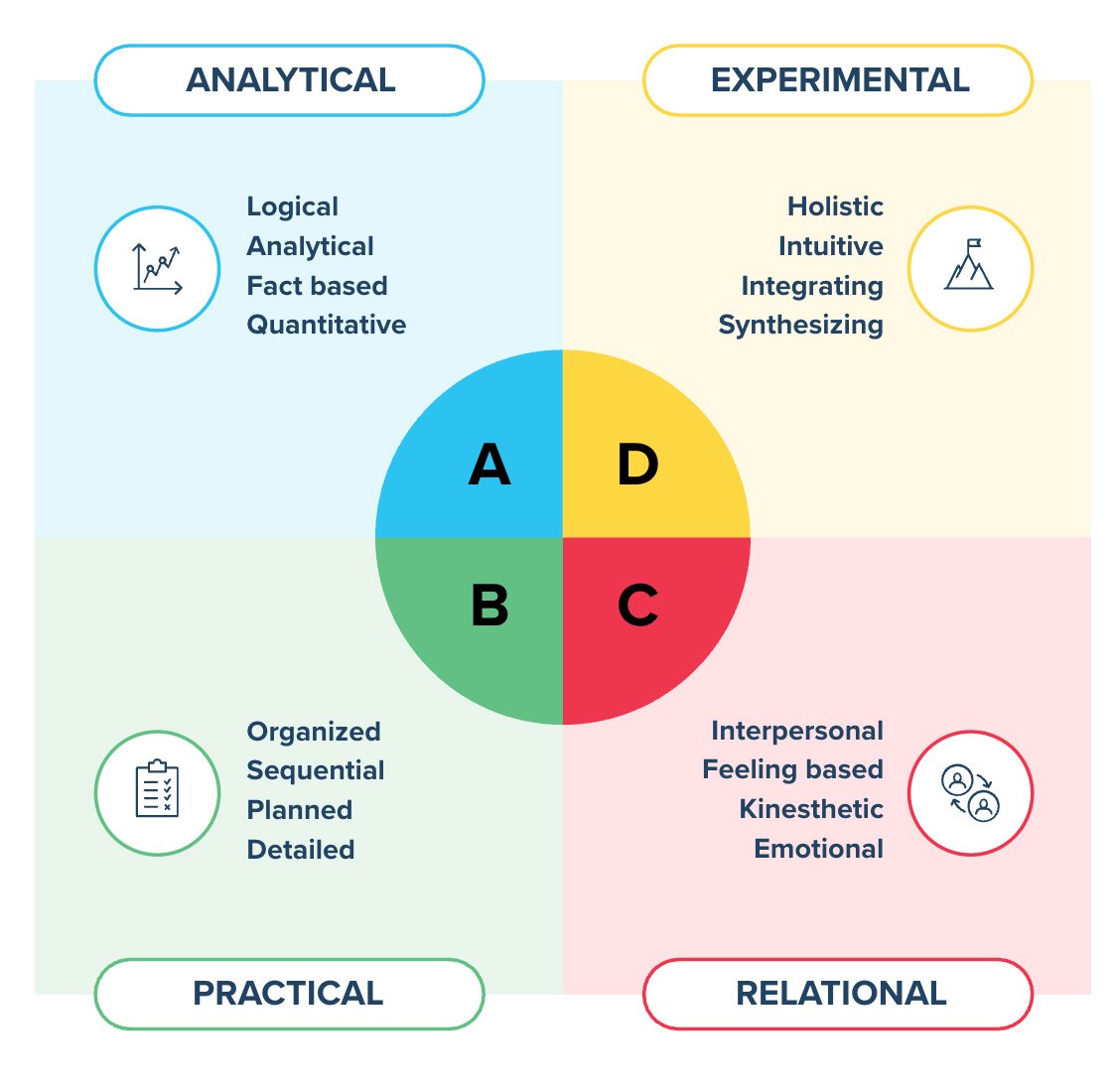The HBDI®
Discover your team's thinking preferences with the only scientifically valid assessment based on the Whole Brain® Thinking model.

What is the HBDI®?
The HBDI® is the assessment based on the Whole Brain® Thinking model, our time-tested framework to decode and harness cognitive diversity of individuals, teams, and organizations. It has been taken by more than 4 million people in more than 60 countries worldwide. It is available in 16 languages. Your HBDI® profile provides an accessible way to understand your thinking preferences, how they shape your approach to problem solving and decision making, and how they may differ from other people’s.
The HBDI® reliably and validly measures the four quadrants, creating a four-quadrant preference profile with a ranking of 1 (primary), 2 (secondary), or 3 (tertiary) for each quadrant based on the degree of preference for the respective quadrant attributes. There are many possible score combinations, such as 1221 or 2311.
The HBDI® does not measure ability, aptitude, or capabilities. Nor does the HBDI® measure activity in specific localized areas of the human brain.

What does the Herrmann Brain Dominance Instrument® (HBDI®) measure?
Through a 116-question, highly validated diagnostic survey, the HBDI® measures four integrated systems of thinking preferences. These four systems can be mapped metaphorically on the human brain through the Whole Brain® Thinking Model, as follows:
Upper Left (Blue or A Quadrant): This quadrant is typified by preferences that are logical, analytical, fact-based, and quantitative.
Lower Left (Green or B Quadrant): This quadrant is typified by preferences that are organized, sequential, planned, and detailed.
Lower Right (Red or C Quadrant): This quadrant is typified by preferences that are interpersonal, feeling-based, kinesthetic, and emotional.
Upper Right (Yellow or D Quadrant): This quadrant is typified by preferences that are holistic, intuitive, integrating, and synthesizing.
How was the HBDI developed?
The HBDI® was developed in the workplace, for the workplace. During his time as management education leader at General Electric, Ned Herrmann became interested in the effects of thought processes and thinking preferences on management and leadership development. Based on extensive research, Herrmann concluded that the brain can be divided (metaphorically) into four quadrants. Each is associated with different thinking, decision-making, and problem-solving preferences.
Based on the Whole Brain® Thinking model, Herrmann developed a series of questions to identify a person's dominant thinking style and degrees of preference across quadrants. These questions became the basis for the HBDI®.
What started as a traditional pencil-and-paper assessment has become a comprehensive talent intelligence platform. The Herrmann platform provides ongoing value through a suite of solutions designed to make the most of your team’s cognitive diversity.
Since then, hundreds of doctoral dissertations and masters theses have built on this work in a variety of theoretical and practical applications. A comprehensive literature review is available upon request.





